Fashion and body art are two fascinating realms that have captivated human beings for centuries. Each plays a vital role in self-expression, allowing individuals to convey their unique personalities, beliefs, and aesthetics to the world. This article delves into the captivating world of fashion and body art, exploring their intertwined history, current trends, and the powerful impact they have on society. From elaborate tattoos to avant-garde fashion statements, we will unravel the intricacies of these art forms and their influence on our daily lives.
Fashion and Body Art: A Dynamic Duo of Self-Expression
Fashion and body art serve as powerful tools for individuals to express themselves and make bold statements. Both mediums allow individuals to transform their bodies into living canvases, reflecting their innermost desires and aspirations.
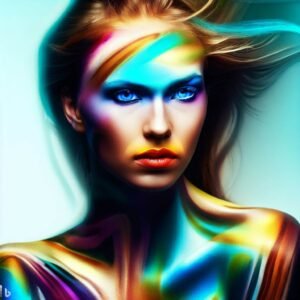
Fashion as a Reflection of Identity
Fashion is an art form that has continuously evolved over time, adapting to cultural shifts and societal changes. It is an outward expression of our inner selves, showcasing our personalities, tastes, and even our mood on any given day. Whether it’s the choice of clothing, accessories, or hairstyles, fashion enables us to curate our own unique style.
Fashion trends often emerge from subcultures and are later embraced by the mainstream. For instance, the punk movement of the 1970s influenced fashion with its rebellious attitude, edgy aesthetics, and DIY ethos. This cultural phenomenon gave rise to distinctive fashion elements like ripped jeans, leather jackets, and unconventional hairstyles, which have since become iconic symbols of rebellion and self-expression.
Body Art: A Canvas for Creativity
Body art, on the other hand, transcends the boundaries of traditional fashion and delves into the realm of permanent or temporary modifications to the body. It includes a myriad of practices, such as tattoos, piercings, scarification, and body painting. Body art allows individuals to assert their identity, beliefs, and emotions on a more profound level.
Tattoos: Living Artwork
Tattoos have been a form of body art for thousands of years, with rich cultural and historical significance across different civilizations. From ancient tribal markings to contemporary ink masterpieces, tattoos have evolved into intricate designs and elaborate compositions. They are a powerful means of self-expression, enabling individuals to adorn their bodies with meaningful symbols, quotes, or artwork that resonate with their personal narratives.
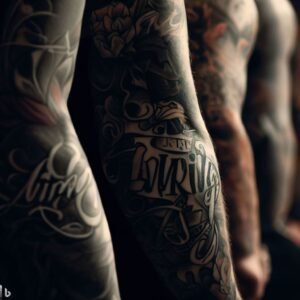
In recent years, tattoos have gained widespread acceptance and popularity, transcending social and cultural boundaries. The advancements in tattooing techniques and the emergence of talented artists have contributed to the growing mainstream appeal of tattoos. Moreover, celebrities and influencers embracing body art have further propelled its acceptance in society, making tattoos a ubiquitous form of self-expression.
Piercings: Adorning the Body
Piercings, another form of body art, involve puncturing the skin to create openings where jewelry can be worn. Ear piercings are the most common, ranging from simple earlobe piercings to more intricate cartilage piercings. However, body piercings have extended beyond the ears and now include nose, lip, eyebrow, and even surface piercings.
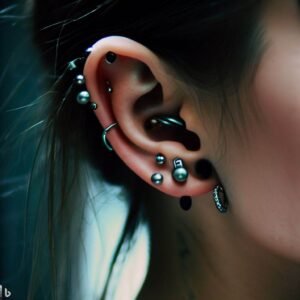
Piercings have cultural, religious, and personal significance, symbolizing beauty, spirituality, or simply a fashion statement. Like tattoos, piercings have become increasingly popular, with individuals adorning their bodies with unique combinations of jewelry and experimenting with various piercing placements to express their individuality.
Fashion and Body Art: Blurring the Lines
Fashion and body art are not mutually exclusive; they often intersect, complementing and influencing each other. Fashion designers have incorporated elements of body art into their creations, embracing the unconventional and blurring the lines between fashion and art. Runway shows have witnessed models adorned with avant-garde body paint, sculptural headpieces, and even temporary tattoos, making a powerful statement about the fusion of fashion and body art.
Moreover, the rise of wearable technology has pushed the boundaries of fashion, enabling individuals to incorporate body art in a digital realm. LED-infused garments, interactive jewelry, and futuristic accessories have transformed fashion into a dynamic and immersive experience, merging the realms of fashion, technology, and body art.
Fashion and Body Art: Influencing Society and Breaking Barriers
The influence of fashion and body art extends far beyond individual self-expression. These art forms have the power to shape societal norms, challenge stereotypes, and foster cultural inclusivity.
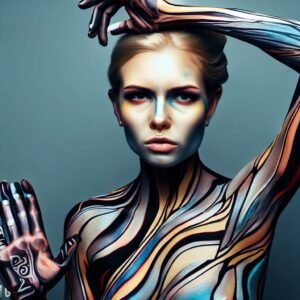
Fashion as a Vehicle for Change
Fashion has long been used as a platform to challenge societal norms and advocate for social change. Designers have embraced fashion as a means to raise awareness about important issues such as sustainability, gender equality, and body positivity.
Fashion brands have embraced sustainable practices, adopting ethical sourcing, recycling initiatives, and reducing their environmental footprint. This shift towards eco-friendly fashion reflects a growing concern for the planet and a desire to promote a more sustainable future.
Furthermore, the fashion industry has made significant strides in promoting diversity and inclusivity. Models of different ethnicities, sizes, and gender identities have gained visibility on runways and in fashion campaigns, challenging conventional beauty standards and celebrating individuality. This representation in fashion helps break down societal barriers and encourages acceptance and appreciation of diverse identities.
Body Art as Empowerment
Body art, too, holds the power to challenge societal norms and redefine beauty standards. It allows individuals to reclaim their bodies and challenge the notion of perfection imposed by society.
Scarification, for example, is a practice that involves intentionally creating scars on the skin. For some individuals, scarification is a way to embrace their body’s uniqueness, transforming what society might perceive as flaws into beautiful and empowering marks of self-expression.
Additionally, body art can act as a form of empowerment for survivors of trauma or those battling illness. Breast cancer survivors, for instance, often choose to have mastectomy tattoos, which not only serve as a form of body art but also symbolize strength, resilience, and reclaiming one’s body.
FAQs
1. Can body art affect employment prospects?
While body art has become more accepted in society, its impact on employment can vary depending on the industry and workplace culture. Some employers may have strict policies regarding visible tattoos or piercings, particularly in customer-facing roles. However, many organizations are becoming more progressive and embracing individuality, focusing more on skills and qualifications rather than appearance.
2. Are there any health risks associated with body art?
When done by a professional using sterile equipment, body art carries minimal health risks. However, improper sterilization or unhygienic practices can lead to infections or other complications. It is crucial to choose reputable artists and studios, ensuring they follow strict health and safety protocols.
3. Can fashion and body art be considered forms of art?
Absolutely! Fashion and body art are undoubtedly art forms. They involve creativity, self-expression, and a profound understanding of aesthetics. From the intricate designs of tattoos to the innovative concepts in fashion, both mediums embody artistic expression and have a significant impact on the cultural and artistic landscape.
4. How can one explore fashion and body art on a limited budget?
Exploring fashion and body art doesn’t have to break the bank. Thrift stores, vintage markets, and online platforms offer affordable and unique fashion finds. As for body art, temporary tattoos, henna designs, or body paint can be great alternatives to permanent modifications, allowing for experimentation without a long-term commitment.
5. Are there any cultural considerations when it comes to body art?
Body art holds cultural significance in many societies. It is essential to respect and understand the cultural context and symbolism associated with specific body art practices. For instance, certain tattoos or piercings may carry religious or spiritual significance and should be approached with cultural sensitivity.
6. Can fashion and body art be a form of self-care?
Absolutely! Both fashion and body art can be forms of self-care and self-expression. They allow individuals to express their identity, boost confidence, and nurture a sense of individuality. Choosing outfits that make you feel empowered or adorning your body with meaningful symbols can contribute to overall well-being and self-esteem.
Conclusion
Fashion and body art provides a rich and diverse landscape for individuals to explore and express their unique identities. From fashion runways to tattoo studios, these art forms continue to evolve, influencing societal norms and breaking down barriers. Whether through personal style choices, permanent body modifications, or fleeting fashion trends, fashion, and body art serve as powerful tools for self-expression, empowerment, and cultural celebration. Embrace your individuality, and let fashion and body art be the brushstrokes that paint your unique canvas of self-expression.
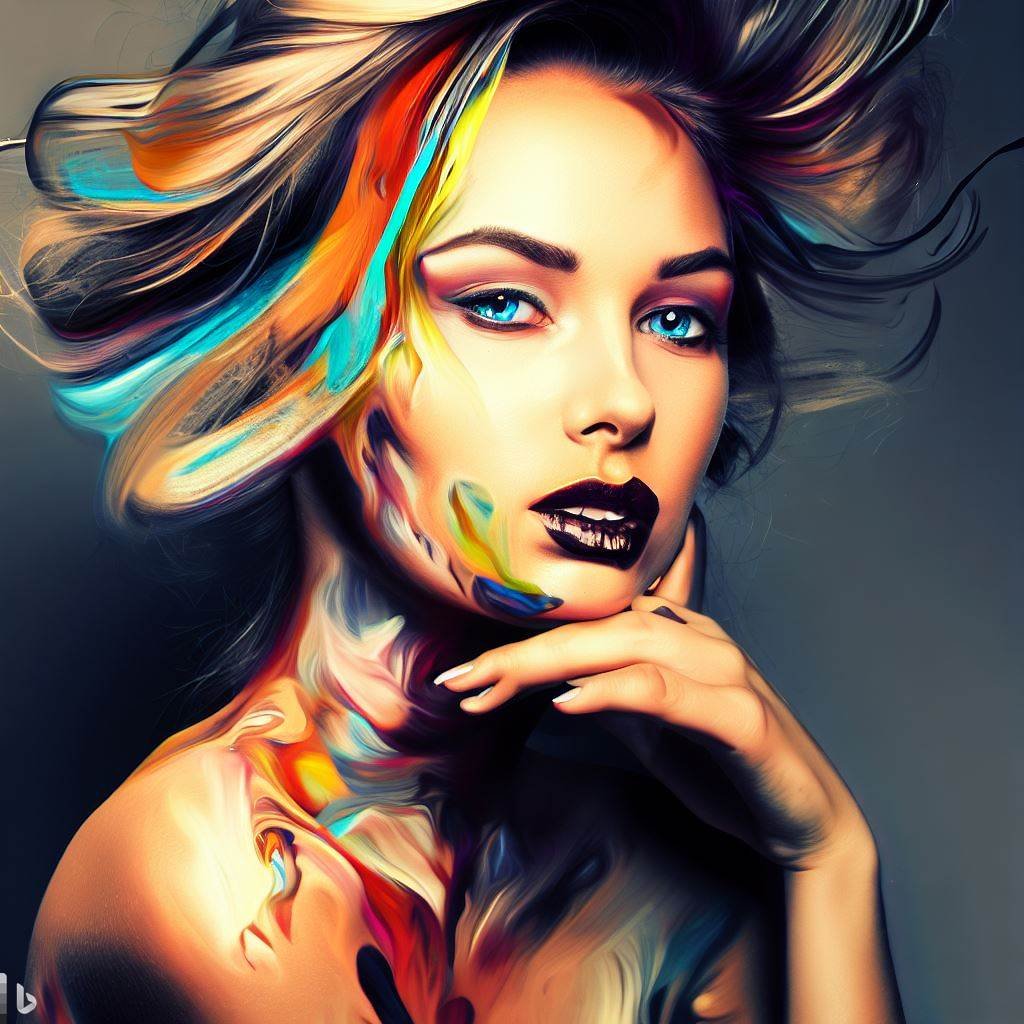
Pingback: Level Up Your Style Game: Tips And Tricks For The Fashion Report In FFXIV